Life Support Equipment
We preserve human life
We supply life support equipment to defense applications in Japan.
Nowadays, airplanes fly at high altitudes where air pressure is so low and oxygen is so scarce for human to survive. So most commercial aircraft like airliners and business jets have systems to pressurize their cockpits and cabins.
On the other hand, a defense aircraft (especially those subjected to high load due to rapid up-and-down motion, like fighters) may not have a pressurization mechanism that covers the whole range of its flight altitude. Crews of such aircraft are more dependent on life support equipment such as oxygen masks.
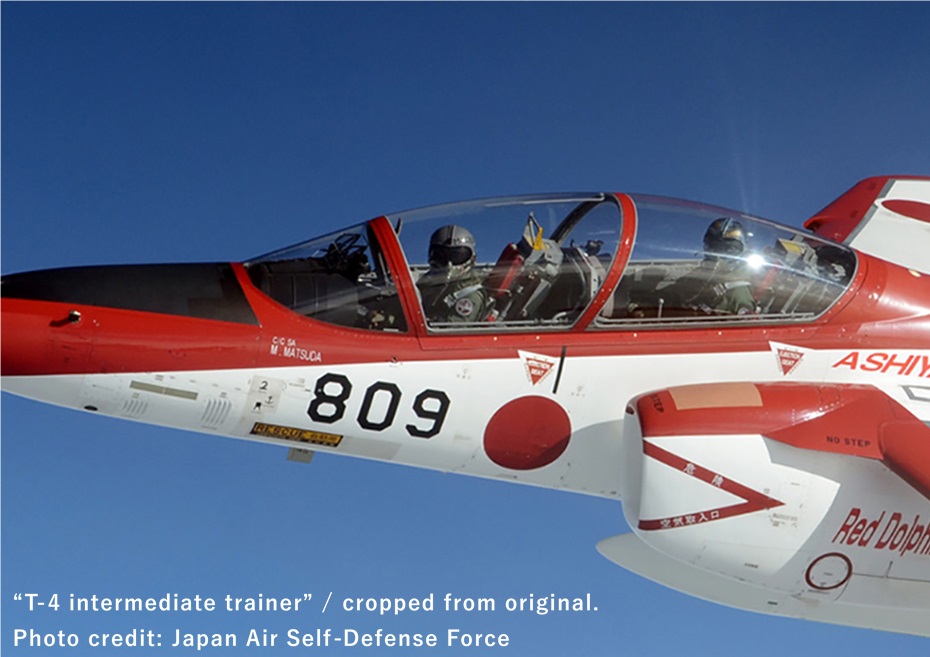
Source of oxygen
Where can we obtain enough O2 for breathing high up in the air? One of the answers is liquid oxygen tanks loaded on the aircraft. This, however, has its limits. When you run out of the oxygen, you can no longer continue flying at high altitudes so you may have to abort the mission and return.
Another answer that solves the problem is the On-Board Oxygen Generating System (OBOGS) that produces highly concentrated oxygen by removing nitrogen and other gases from engine bleed air. Tokyo Aircraft Instrument manufactures the OBOGS under license.
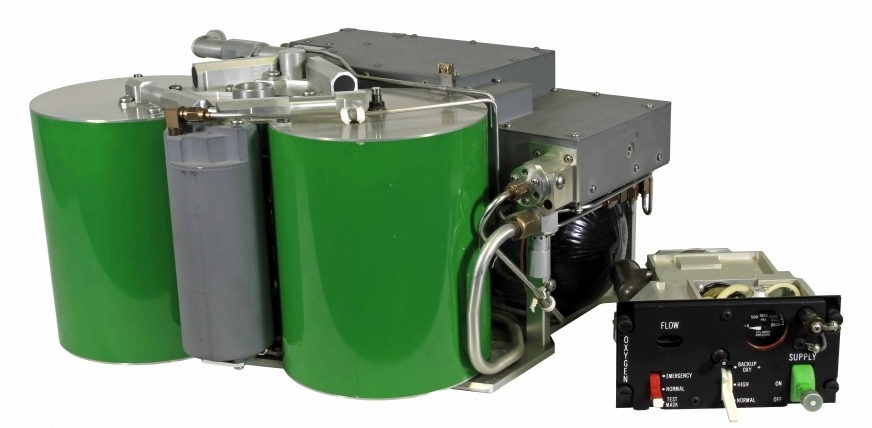
On-Board Oxygen Generating System (OBOGS)
OBOGS mechanism
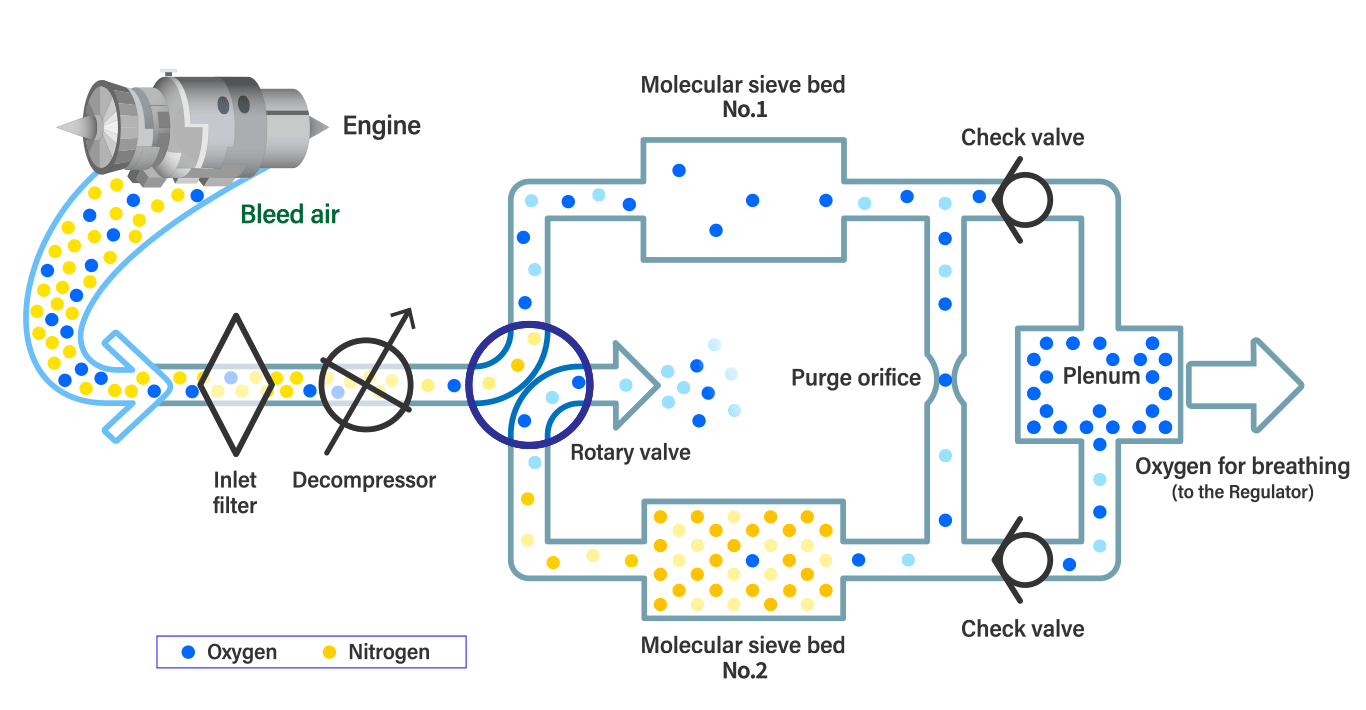
Note: For simplification, gases other than oxygen and nitrogen are omitted in this figure.
When engine bleed air enters the OBOGS system, impurities like moisture are removed by the inlet filter, then the decompressor makes its pressure suitable for producing oxygen.
Decompressed bleed air goes to either of the two molecular sieve beds; the rotary valve periodically switches the one that receives the bleed air.
The receiving bed adsorbs nitrogen in the air by the action of the molecular sieve, and sends out gas whose O2 concentration is 95%.
This highly concentrated oxygen is sent to the plenum through the check valve, stored there, sent to the regulator, adjusted to a pressure suitable for breathing, then supplied to the oxygen mask.
At the same time, the other bed is connected to the exhaust outlet. Due to the pressure difference inside and outside the OBOGS system, nitrogen in this bed (adsorbed when it was last receiving the bleed air) is discharged from the outlet. Part of the concentrated O2 from the other bed is provided to this bed through the purge orifice, to push the last bit of N2 out of the system.
By repeating the above operation with switching of the rotary valve, the OBOGS continuously generates concentrated oxygen onboard.
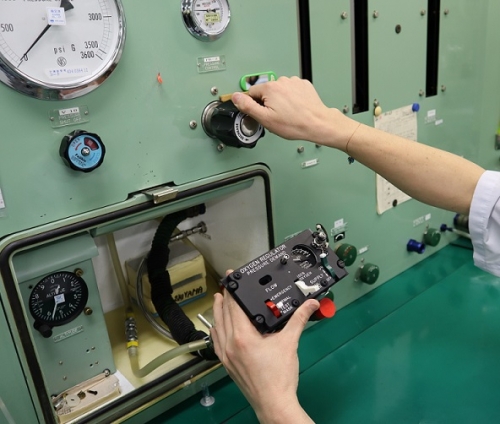
Adjusting a regulator
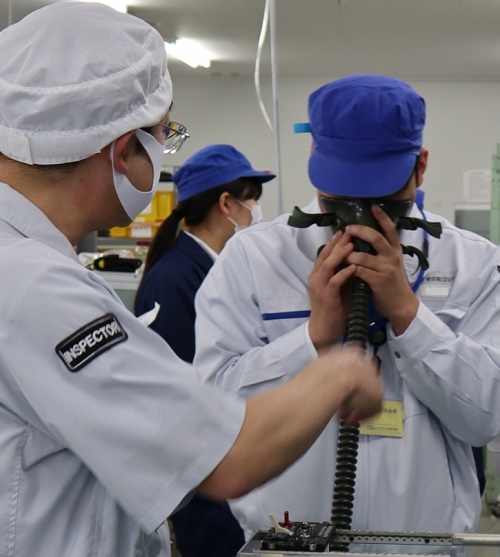
One of the highlights of our new employee on-site training:
Experiencing the oxygen mask and feeling like a pilot!
